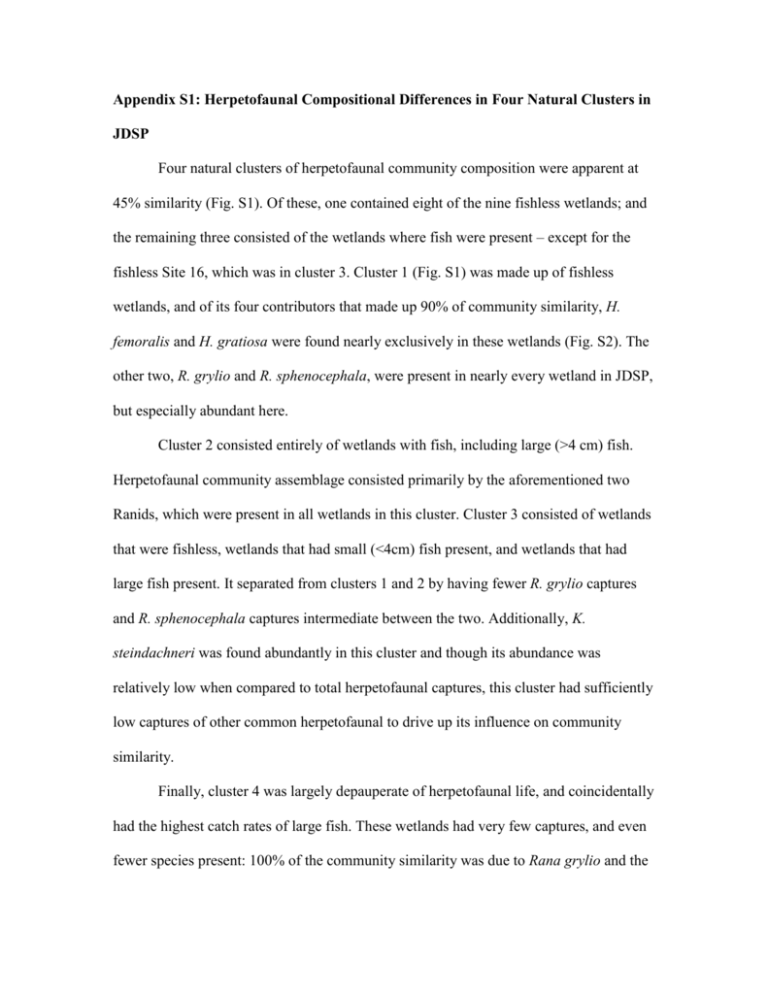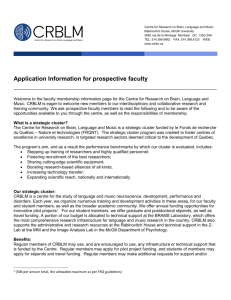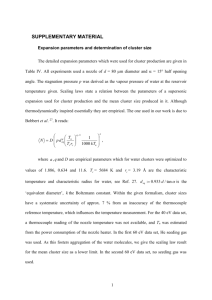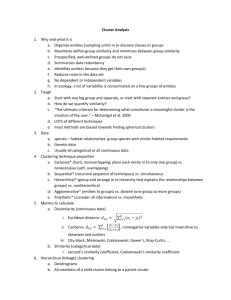fwb12683-sup-0001-AppendixS1
advertisement

Appendix S1: Herpetofaunal Compositional Differences in Four Natural Clusters in JDSP Four natural clusters of herpetofaunal community composition were apparent at 45% similarity (Fig. S1). Of these, one contained eight of the nine fishless wetlands; and the remaining three consisted of the wetlands where fish were present – except for the fishless Site 16, which was in cluster 3. Cluster 1 (Fig. S1) was made up of fishless wetlands, and of its four contributors that made up 90% of community similarity, H. femoralis and H. gratiosa were found nearly exclusively in these wetlands (Fig. S2). The other two, R. grylio and R. sphenocephala, were present in nearly every wetland in JDSP, but especially abundant here. Cluster 2 consisted entirely of wetlands with fish, including large (>4 cm) fish. Herpetofaunal community assemblage consisted primarily by the aforementioned two Ranids, which were present in all wetlands in this cluster. Cluster 3 consisted of wetlands that were fishless, wetlands that had small (<4cm) fish present, and wetlands that had large fish present. It separated from clusters 1 and 2 by having fewer R. grylio captures and R. sphenocephala captures intermediate between the two. Additionally, K. steindachneri was found abundantly in this cluster and though its abundance was relatively low when compared to total herpetofaunal captures, this cluster had sufficiently low captures of other common herpetofaunal to drive up its influence on community similarity. Finally, cluster 4 was largely depauperate of herpetofaunal life, and coincidentally had the highest catch rates of large fish. These wetlands had very few captures, and even fewer species present: 100% of the community similarity was due to Rana grylio and the snake Nerodia floridana. Despite both having elevated CPUEs of fish, and the presence of extremely large predatory fish which are absent in other clusters, these sites are different in nearly every other metric (Table 1, Table S1): they are spatially separated by more than 4 km, occur in two distinct habitat types and elevations (scrub and pine flatwoods), and one is an open water pond while the other is an emergent-vegetation filled marsh. - - 4- - - 2- - - - - - - - -3 - - - - - - -1 - - - - - - - Site Fig. S1. Cluster dendrogram of log transformed herpetofaunal community assemblages. Sites that are clustered together below the dotted line are at least 44% similar in community composition. At this level of similarity there are four clusters. Table S1: SIMPER analysis of species contributing to similarity within each natural cluster at 44% similarity. Community Composition By Cluster Cluster Avg. Species Avg. Abundance Avg. Sim. Contribution Sim. 1 2 3 4 44.32 R. grylio 1.6 19.85 44.79% 44.32 H. femoralis .68 8.62 19.45% 44.32 R. sphenocephala .85 7.82 17.65% 44.32 H. gratiosa .55 4.93 11.13% 63.79 R. grylio .87 51.00 79.96% 63.79 R. sphenocephala .16 6.66 10.43% 46.71 R. grylio .18 18.48 39.56% 46.71 R. sphenocephala .31 13.83 29.61% 46.71 K. standecheri .18 12.56 26.88% 46.06 R. grylio .07 31.54 68.47% 46.06 N. floridana .04 14.52 31.53% b.) a.) 2 4 3 c.) d.) Fig. S2. NMDS ordination with individual species abundances in wetland herpetofaunal communities in JDSP. a.) pinewoods treefrogs (Hyla femoralis) – with cluster numbers labeled, b.) pig frog (Rana grylio), c.) Florida mud turtle (Kinosternon steindachneri), and d.) southern leopard frog (Rana sphenocephala), bubble size represents relative abundance of given species in a wetland, and wetlands with no captures of such species are not represented.







